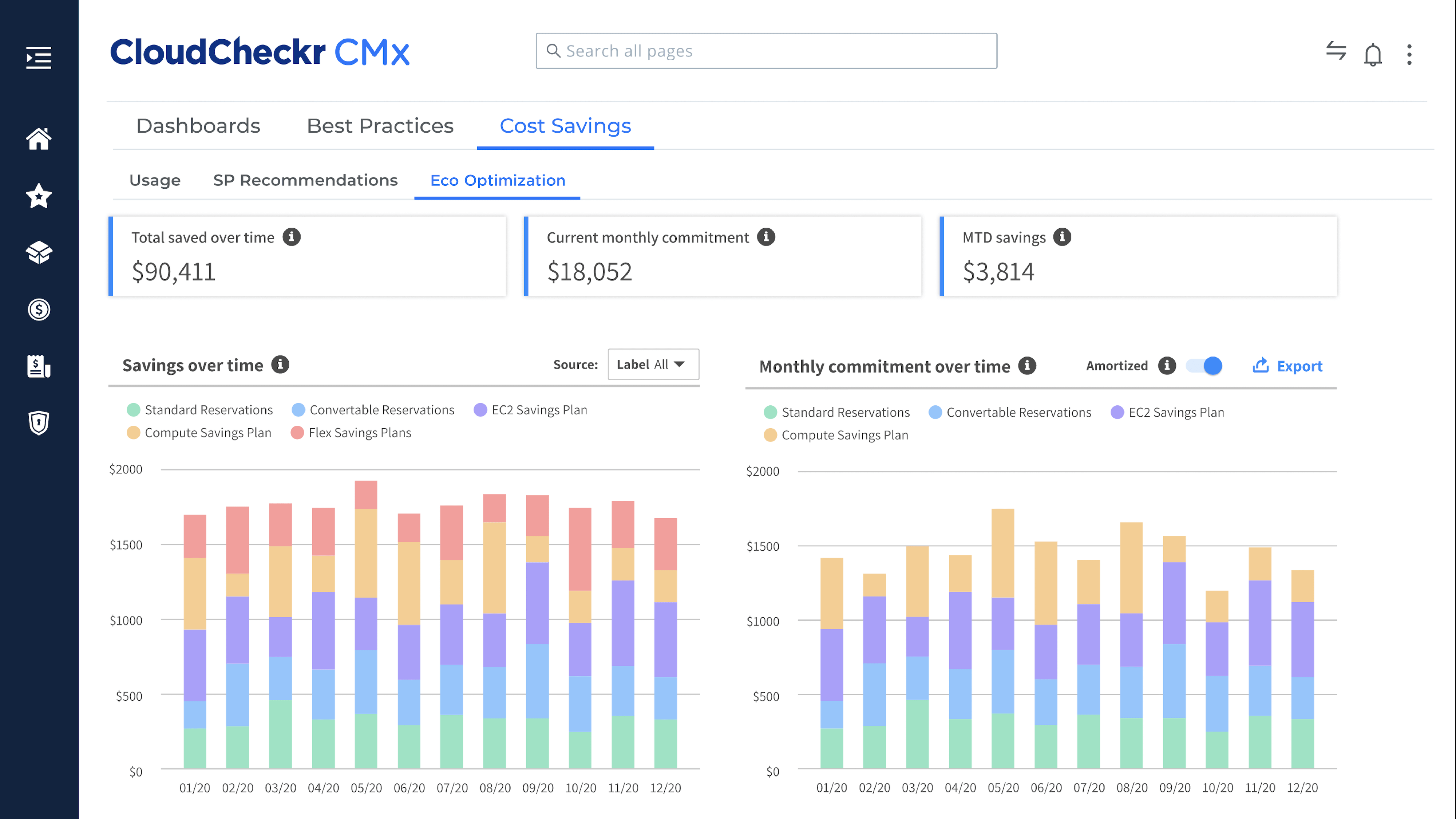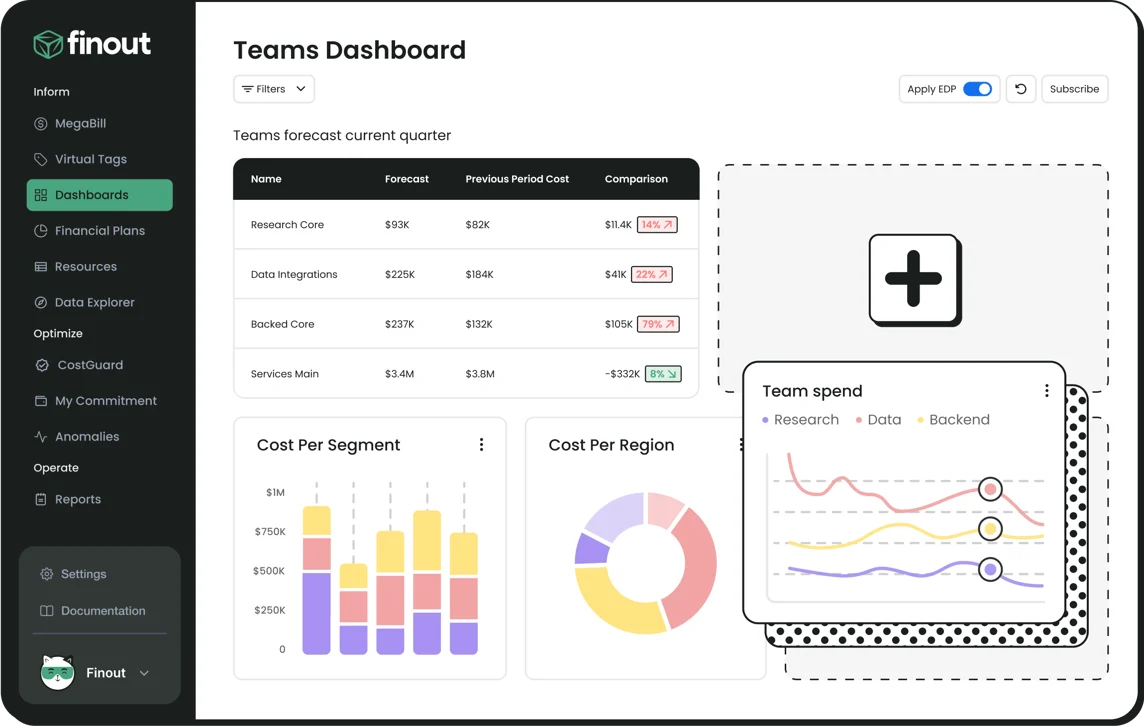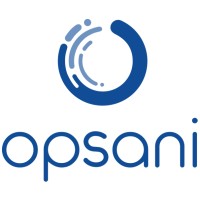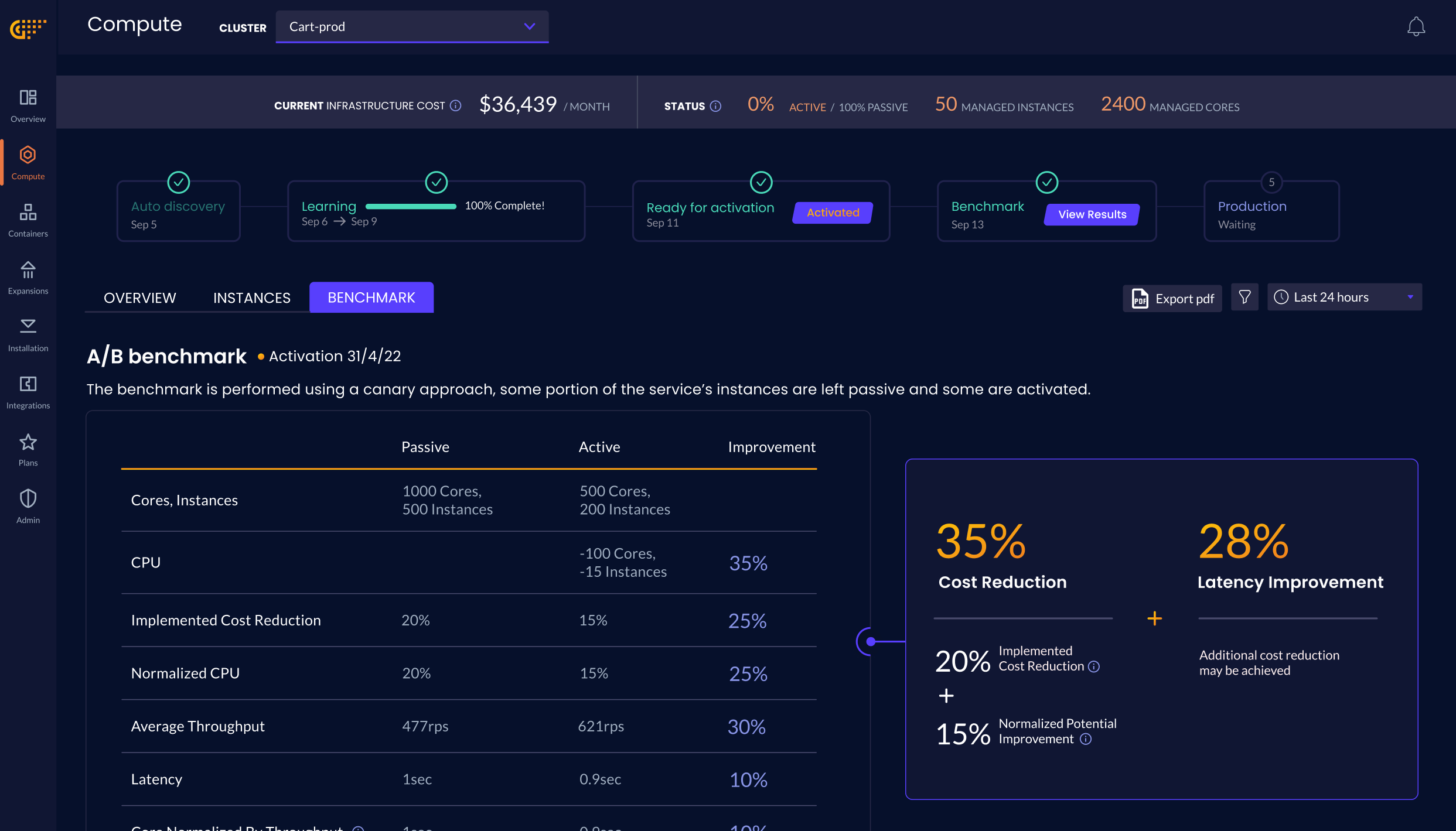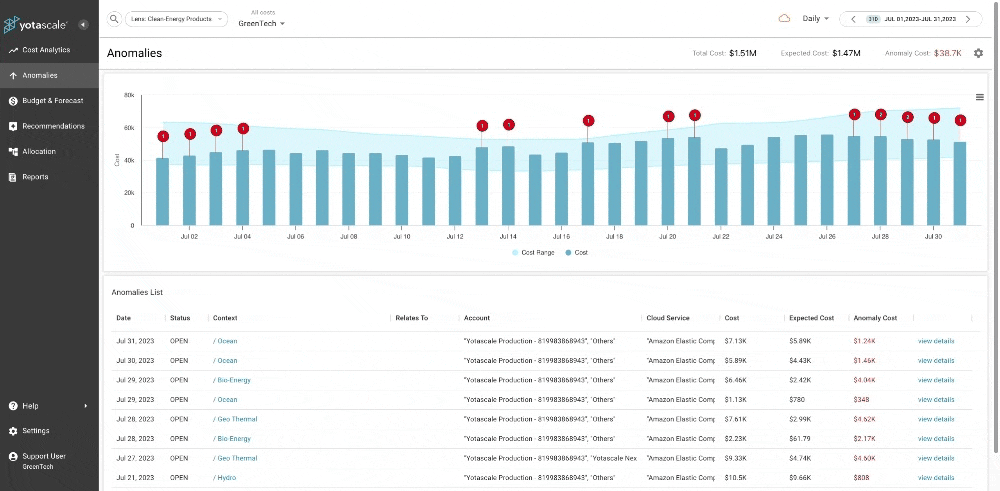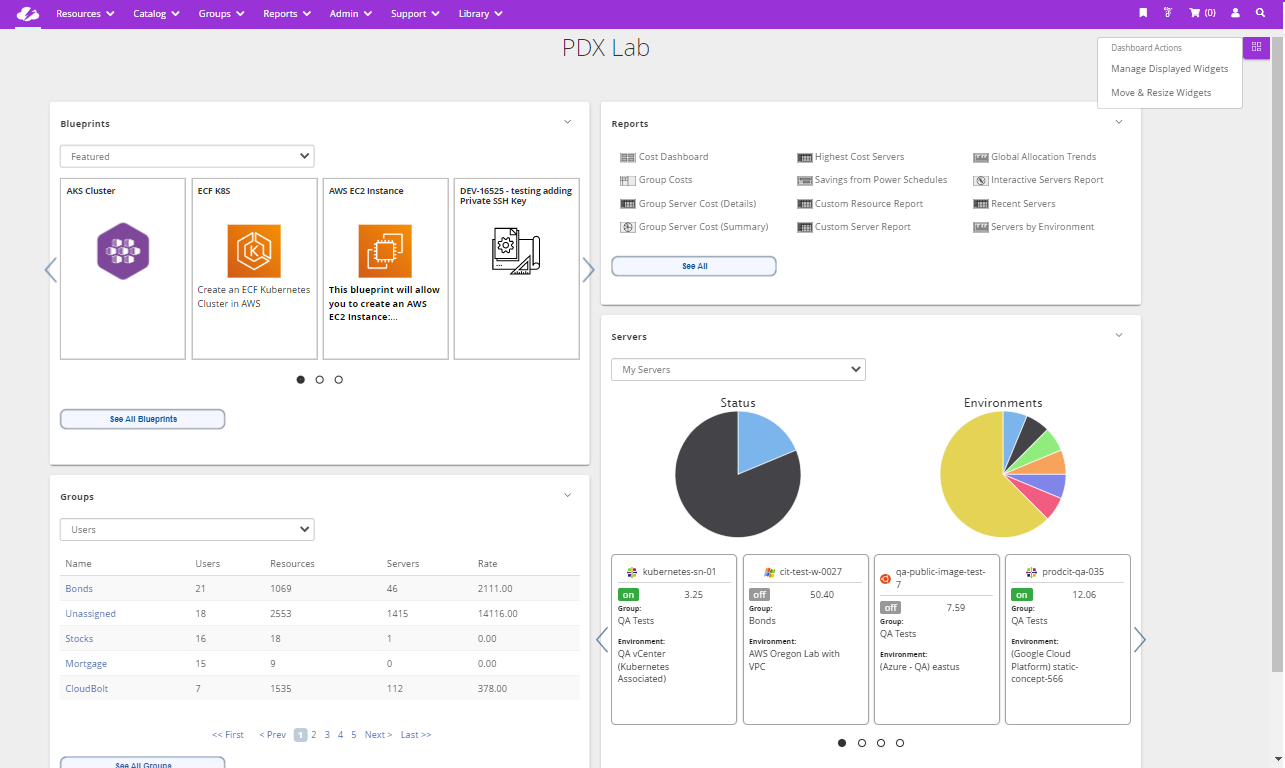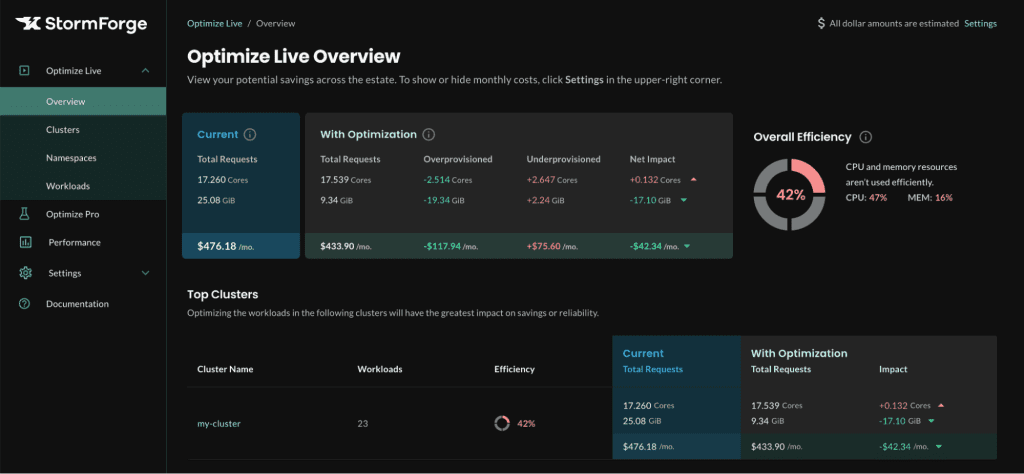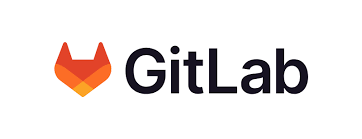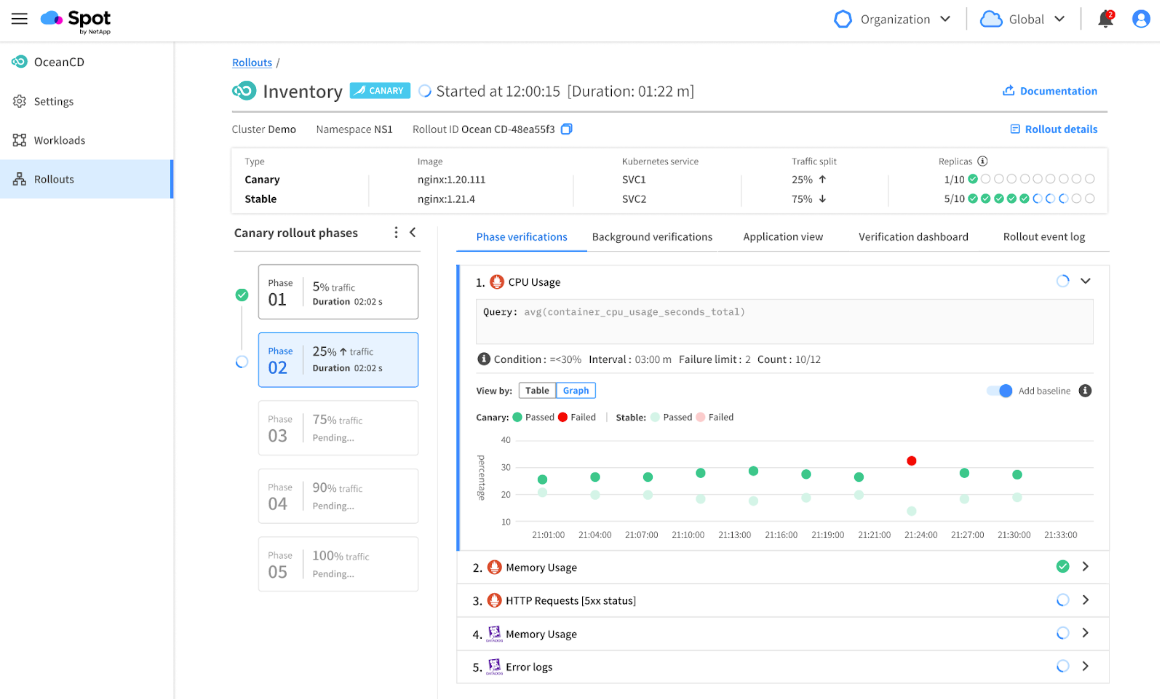Top 30 AWS Cost Optimization Tools in 2025
With cloud spending making up a large and growing share of engineering budgets, cloud cost optimization is crucial to ensure cloud expenditures align with business objectives and budgets.
Everyone wants to save money in the cloud, and many tools are being marketed to help you do just that. Yet, it can be challenging to decide on the best solution. The right platform can help you cut through complexity and help you get more out of your cloud resources. On the other hand, selecting the wrong platform might lead to unpleasant billing surprises and missed savings.
That’s why we wrote this complete guide to AWS cost optimization tools — find out key areas of cost reduction, the best tools broken down by category, and strategies for reducing your AWS spending.
What is AWS Cost Optimization?
AWS cost optimization is the process of reducing your Amazon Web Services (AWS) expenses without sacrificing the performance and capacity requirements of your applications. Effective AWS cost optimization involves understanding billing and account structures, monitoring and visualizing real-time usage and costs, and making good decisions about resource allocation. This might include strategies such as selecting the right pricing model (such as On-Demand pricing versus Savings Plans), scaling resources to match demand, and utilizing tools and services designed to monitor, manage and reduce costs.
Native AWS Cost Tools vs Third-Party Tools
| Category | Native AWS Tools | Third-Party Tools |
|---|---|---|
| Integration | Fully integrated with AWS services; no external setup needed | Requires connecting cloud accounts; integrations can be complex |
| Coverage | Focused on AWS only | Broader coverage—multi-cloud, Kubernetes, GenAI, and SaaS (e.g., Databricks, Snowflake) |
| Cost to Use | Free to use (some features may incur minor API or data processing costs) | Paid subscription; pricing varies by features, usage, or cloud spend |
| Features | Core capabilities for cost visibility, budgeting, and basic optimization | Advanced features: business-aligned cost views, as well as advanced optimization tools for commitment management, rightsizing, forecasting, etc. |
| Ideal For | Teams fully on AWS who want basic cost control with no extra tools | Teams needing automation, deeper insights, multi-cloud support, or FinOps alignment |
Native AWS tools are a solid choice if your workloads run exclusively in AWS and your team is comfortable working within the AWS ecosystem. They offer direct access to billing data, integrate with other AWS services, and are free or low-cost to use. For teams with simple cost tracking needs—like setting budgets, viewing usage trends, or running cost allocation reports—these tools are often enough.
On the other hand, you’ll likely need third-party tools if you’re in a more complex environment (such as rapidly scaling usage or an enterprise situation). For example, if you’re operating in a multi-cloud environment, using Kubernetes, managing multiple business units, or looking to automate optimization tasks. While they often involve setting up integrations or paying a cost, third party tools can provide a centralized view across AWS, Azure, GCP, and SaaS, along with richer features like commitment tracking, forecasting, chargebacks, and automated rightsizing.
Why Should You Optimize Your AWS Costs?
By optimizing AWS costs, businesses can ensure they are only paying for the resources they need, maximizing their return on AWS investments. Some key reasons why AWS Cost optimization matters include:
AWS costs can quickly spiral out of control due to the pay-as-you-go model and auto-scaling features, leading to unexpected expenses if not actively managed.
Unoptimized AWS environments waste resources, such as idle EC2 instances, over-provisioned compute, and unused EBS volumes, inflating costs unnecessarily.
Engineering teams need better cost visibility to make architecture decisions that align cloud spend with business goals like gross margins and cost per customer and create a culture of accountability.
Finance teams struggle to track AWS spend without proper cost allocation tools, making it difficult to assess profitability, get on the same page with engineering about cloud expenditures, and regularly report on costs.
Automating cost management reduces manual effort. Engineering resources are extremely valuable – if you can automate tasks like resource rightsizing, commitment management, reporting, etc. the time savings can be extremely valuable
Optimizing your AWS costs frees up budget for innovation, allowing businesses to reinvest in product development, customer experience, and long-term growth.
What Are Some AWS Design Principles That Enable Cost Optimization?
AWS offers some design principles for operational excellence in the cloud:
1. Leverage Cloud Financial Management (CFM)
AWS encourages organizations to treat cloud spend like any other strategic investment. Cloud Financial Management (CFM) means building cost awareness into your processes—setting budgets, forecasting spend, allocating costs to teams, and creating accountability. When embedded into daily operations, CFM helps finance and engineering stay aligned on business goals and financial outcomes.
2. Track, Analyze, and Attribute Costs
Tagging resources and linking accounts allows you to allocate cloud spend to business units, teams, or projects. Accurate attribution helps identify cost drivers, supports chargeback or showback models, and enables better budgeting decisions. Without it, cloud bills are just noise—impossible to act on.
3. Leverage Pay-As-You-Go or On-Demand
This pricing model lets you pay only for what you use, when you use it. But without oversight, variable usage can easily lead to runaway costs. That’s why it’s important to monitor consumption patterns and ensure teams use scalable services intentionally—turning off idle resources, auto-scaling only when needed, and regularly rightsizing workloads.
4. Reduce Overhead with Managed Services
Managed services offload infrastructure management to AWS, reducing operational burden and cost. Instead of running databases or Kubernetes clusters yourself, managed offerings like RDS or Fargate let teams focus on building features, not maintaining systems—often at lower total cost due to built-in scaling and optimization.
5. Measure Efficiency, Not Total Spend
A growing cloud bill isn’t always bad—especially if it reflects customer growth. The key is measuring efficiency: cost per user, per transaction, or per unit of output. Tracking these metrics helps determine whether spend is tied to business value or wasted resources, enabling better decisions on where to invest or cut.
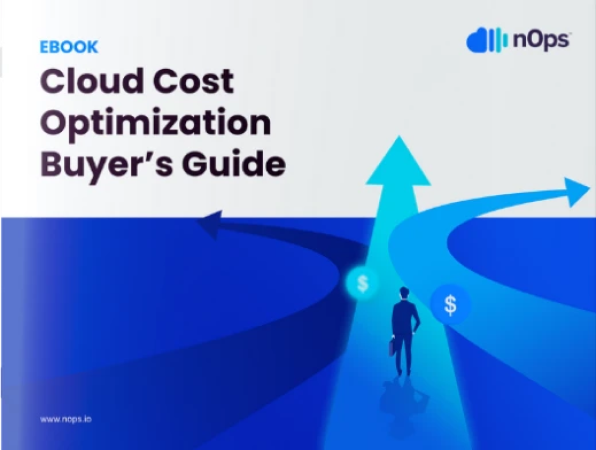
Best Practices for Reducing AWS Costs
Let’s cover the key areas where almost any organization can reduce their AWS cloud costs, either manually or with the use of cloud cost management tools.
#1: Cloud Management: Cost Allocation, Visibility & Reporting
Optimizing cloud costs often starts with addressing the key issue of limited visibility into expenses. Without clear insights, it’s hard to identify what and how much to cut. Key challenges typically include:
- The AWS bill is confusing, and it’s difficult to attribute shared costs
- It’s difficult to forecast spending and stay within the budget
- More visibility is needed to investigate unexpected charges or spikes in usage
The goal is to fully allocate, monitor, analyze and report cloud costs so that you fully understand how resources are being used and by whom. Key terms include:
- Cost allocation: the process of identifying and assigning the costs of shared cloud resources and services to different projects, applications, users or teams within an organization.
- Tags: simple metadata attached to resources in order to make them easily identifiable. If your AWS account has hundreds or thousands of resources, tags help you to categorize, filter and organize depending on different criteria such as project, environment or purpose.
- Showbacks/Chargebacks: a type of cost allocation in which the costs of cloud services and resources are reported/billed to the business units or teams that use them.
#2: Commitment Management: Reserved Instances & Savings Plans
In exchange for a commitment to spend a certain amount, AWS will offer a substantial discount on compute resources (up to 72-75% depending on various factors such as the length and flexibility of the commitment). However, it’s not always easy to determine the right type or amount of commitment to make to save the most. If you under-commit, you miss out on discounts. But if you over-commit, you’re paying for resources you don’t need.
Forecasting costs and planning commitments is an art. There are many possible choices and combinations — for example, there might be over 200,000 pricing options for one particular type of compute in a single region. And as business needs determine cloud usage, it’s necessary to continually rebalance and re-optimize. Determining the right commitments to make requires often analyzing the past 30-45 days of historical data, which takes time.
For a comprehensive explanation and analysis of Savings Plans and Reserved Instances, how they are applied across your organization, and when to use them, you can check out The Ultimate Guide to AWS Commitments.
#3: AWS Spot Instance Optimization and Automation
AWS Spot Instances are spare AWS (On-Demand) capacity that users can purchase at a heavy discount. However, it’s important to note that AWS gives you a discount on the instance, but not a guarantee that you’ll be able to use it to the end of your compute need. The instance can be taken away at any time with a 2-minute warning, potentially disrupting critical workloads.
In addition, the Spot market is highly volatile. It is complex to manage fluctuating pricing, the types of instances available on the market, and the most cost-effective decision to make at any time, in view of existing commitments across your organization.
Luckily, tools can reduce much of the complexity involved in using Spot. By leveraging Machine Learning to analyze the market, your usage, and other dynamic factors, they can put you on the most reliable and cost-effective Spot options automatically.
#4: Cost Optimization Automation: Right Sizing & Scheduling
As your usage patterns evolve, you’ll find that some applications no longer need as many resources available to them as they once did. It’s essential to continually right size these applications so that you’re not overpaying for oversized or unnecessary instances. By analyzing historical usage and performance, you can identify and eliminate cloud waste and unnecessary spending.
Because continual right sizing is necessary to optimize costs, automation tools are key. Some features to look for include:
Right sizing recommendations for EC2 and Auto Scaling Groups
Scheduling capabilities to pause resources that are idle or not actively needed at certain times
Storage optimization & migration tools that can help you save time through automation
Top 30 AWS Cost Optimization Tools
Now that we’ve discussed the key principles of AWS cost management, let’s dive into the list of best tools to choose from.
#1: nOps
nOps is an ML-powered AWS cost optimization platform that helps AWS users reduce their costs by up to 50% on autopilot. It manages $2 billion in cloud spend and was recently named #1 in G2’s cloud cost management category. Here are some of its cost-saving offerings:
- Compute Copilot: automatically selects the optimal compute resource at the most cost-effective price in real time for you — also makes it easy to save with Spot discounts
- Business Contexts: understand 100% of your AWS bill with cost allocation, chargebacks, showbacks, tagging
- Commitment Management: risk-free automatic life-cycle management of your EC2 commitments
- nOps Essentials: right sizing recommendations with one-click apply, resource scheduling, optimization of storage via Git and Terraform integrations
Our mission is to make it easy for you to optimize costs, so you can focus on building and innovating. You can book a demo to find out how nOps can help you start saving today.
AWS Native Tools
Amazon Web Services offers many free tools to help with your AWS cloud cost optimization. Here are some of the most important:
#2: AWS Cost Explorer
AWS Cost Explorer enables you to view and analyze your costs and usage.
You can view data for up to the last 13 months, forecast how much you’re likely to spend for the next 12 months, and get recommendations for what Reserved Instances to purchase.
Cost Explorer can also be used to identify areas that need further inquiry and see trends that you can use to understand your costs.
#3: AWS Trusted Advisor
AWS Trusted Advisor in an AWS cost analysis tool that helps you optimize costs, increase performance, improve security and resilience, and operate at scale in the cloud.
Trusted Advisor continuously evaluates your AWS environment using best practice checks across the categories of cost optimization, performance, resilience, security, operational excellence, and service limits, and recommends actions to remediate any deviations from best practices.
#4: AWS Budgets
With AWS Budgets, you can set custom budgets that trigger alerts when cost or usage exceed (or are forecasted to exceed) a budgeted amount. Budgets can be set based on tags and accounts as well as resource types. Major use cases include:
- Monitoring cost and usage — set your preferred budget period to daily, monthly, quarterly, or annually, and create specific budget limits.
- Creating scheduled reports — Stay informed on how actual or forecasted costs and usage progress toward your budget threshold.
- Responding to thresholds — Set up custom actions to run automatically or through an approval process when a budget target is exceeded.
#5: Amazon CloudWatch
Amazon CloudWatch is an AWS-native monitoring and observability service. It can be used to collect and track metrics, monitor log files, set alarms, and automatically react to changes in AWS resources.
Some of its most common uses include monitoring application performance, performing root cause analysis, optimizing resources, and testing website impacts.
#6: AWS Instance Scheduler
The AWS Instance Selector automates the starting and stopping of EC2 instances and RDS instances. You can stop resources that are not in use and start them back up as soon as you need them. This AWS tool functions by using resource tags and AWS Lambda to automatically stop and start instances, and it can be deployed across multiple AWS Regions based on a schedule you define.
When compared to a setup where you leave all your compute instances continuously running at full utilization (even when those resources aren’t being used), this solution can lead to significant cost savings.
AWS Cost Management Tools & Optimization Tools
Let’s talk about some general-purpose tools for managing and optimizing your AWS usage and costs.
#7: Cloudability
Apptio Cloudability is a cloud financial management platform that improves visibility and governance across cloud environments. It provides budgeting, forecasting, and rightsizing features as part of its financial management solution.
One major advantage of the tools is its FinOps focus, helping to accurately track and forecast cloud costs and correlate cloud spending to business value.
#8: Densify
Densify is used to automatically optimize your cloud resources and automatically configure your cloud instances. It uses Machine Learning to perform deep analysis of workload characteristics and cloud provider capabilities, to continuously match cloud applications and AWS services to the right cloud infrastructure.
And the platform is flexible — it runs on multiple cloud services and is suitable for multicloud and hybrid cloud architectures.
#9: CloudHealth
VMWare Tanzu CloudHealth enables users to manage their cloud costs, usage, performance and security through a single interface.
Some of CloudHealth’s advantages include its comprehensive set tools that help businesses manage, analyze, and optimize their cloud infrastructure and spending, as well as its multicloud capabilities.
#10: Flexera
Flexera’s mission is to improve visibility, allocation and efficiency of cloud spend at scale. It provides actionable recommendations, budget controls, and cost policies to help your organization avoid surprises and reduce unnecessary cloud spend.
One of Flexera’s selling points is the set of automation tools it provides to act on recommendations, making your cloud optimization and governance more scalable and efficient.
#11: Spot by NetApp
Spot by NetApp (formerly known as Spot.io) is a CloudOps tool for reliably, securely, and efficiently deploying and operating cloud infrastructure and applications.
Spot by NetApp is able to automate workload management across various cloud providers by constantly analyzing cloud resource usage using machine learning algorithms. It helps users identify and leverage cost-saving opportunities for automatic cloud cost control and efficient scaling of workloads.
#12: CloudCheckr
CloudCheckr helps large enterprises stay in control of complex cloud environments. It’s especially useful if you have strict reporting requirements or need to track usage across dozens (or hundreds) of linked accounts. Teams use it to validate AWS bills, enforce internal policies, and generate compliance-ready reports. If your FinOps motion is tightly tied to governance and auditability, CloudCheckr fits that lane. (Note that it is now part of NetApp).
Commitment Management Tools
If you’re looking for a solution to help you optimize your commitments to increase savings and flexibility, a commitment management tool can help. Here are some of the best tools to help you manage your AWS Savings Plans and Reserved Instances.
#13: Zesty
Zesty helps you automate the efficient allocation of Reserved Instances (RI) and Savings Plans (SP). You can use it to automatically adjust commitments, so that your DevOps team doesn’t need to manually review and manage discount programs on an ongoing basis.
Zesty also helps you reduce the financial risk of purchasing one or three-year commitments with its buy-back guarantee for Standard RIs.
#14: ProsperOps
ProsperOps is an automated optimization service that manages purchase commitments on AWS and GCP. The service monitors usage of your resources and automatically adjusts discount instruments.
For example, it manages AWS Reserved Instance and Savings Plan commitments on your behalf, analyzing your usage to purchase and sell commitments as needed to maximize savings outcomes while preserving sufficient flexibility.
#15: FinOut
Finout is designed for organizations that need to monitor and optimize long-term cloud commitments, such as AWS Reserved Instances and Savings Plans. It offers a unified dashboard that consolidates usage and billing data, enabling teams to assess how actual consumption aligns with committed expenditures. This is particularly beneficial for finance teams aiming to prevent underutilization of prepaid resources. Beyond commitment tracking, Finout provides features like cost allocation, anomaly detection, and customizable dashboards, supporting comprehensive cloud cost management across various services and vendors.
Spot Tools
If you’re looking to save on your AWS bill, Spot instances offer up to 90% discounts on EC2 instances — but the catch is that AWS might take the instance back at any time, potentially interrupting your workload.
Let’s talk about tools that can help you more easily navigate Spot instance selection, workload management, Spot terminations, and more.
#16: Xosphere
Xosphere is a Spot instance orchestration platform that automatically chooses the most optimal AWS Spot instances for your workloads. It integrates natively with Amazon Auto Scaling Groups and monitors the instances within each group.
When Spot instance capacity is available at a favorable price, Instance Orchestrator will replace expensive On-Demand instances with cheaper Spot instances. On the other hand, when Spot instance capacity is no longer available at a favorable price, it will switch back to On-Demand instances to ensure your application remains available.
Through automation, XOSphere’s platform helps you to take advantage of Spot pricing while reducing manual effort.
#17: Opsani
Opsani utilizes AI to continuously optimize cloud applications, adjusting configurations to enhance performance and reduce costs. While Opsani does not directly manage or integrate with Spot Instances, its optimization capabilities can help applications run more efficiently, which may complement the use of Spot Instances by improving overall resource utilization.
#18: Granulate
Granulate offers real-time, autonomous optimization for compute-intensive applications by analyzing application behavior and system metrics to adjust resource allocation dynamically. This approach reduces latency and improves throughput. While Granulate does not provide features specifically for Spot Instance management or interruption handling, its general performance optimizations can benefit workloads running on various types of cloud infrastructure, including Spot Instances.
#19: Yotascale
Yotascale provides comprehensive visibility into cloud spending across multiple cloud providers, enabling organizations to allocate costs accurately and identify savings opportunities. While Yotascale offers detailed cost analysis and reporting, it does not have dedicated features specifically for tracking or optimizing Spot Instance usage. However, it can help organizations monitor overall cloud costs, including those associated with Spot Instances.
#20: Cloudbolt
CloudBolt delivers automated governance and optimization solutions for hybrid cloud environments, helping organizations enforce policies and manage resource provisioning. It includes capabilities for managing Spot Instances, allowing users to set policies that dictate when and how Spot Instances are used. This ensures that Spot Instances are leveraged effectively within the organization’s broader cloud strategy, balancing cost savings with performance and availability requirements.
Kubernetes & Container Cost Tools
Many AWS customers are currently running their workloads on Amazon Elastic Kubernetes Service (Amazon EKS) for its extensive feature set, flexibility, scalability, and capacity for optimizing resource use. Here are the tools that can help you efficiently optimize and automate the scheduling and scaling of your Kubernetes workloads.
#21: Kubecost
Kubecost provides real-time cost monitoring and optimization for Kubernetes, offering insights into how resources are being utilized and where savings can be made.
It integrates directly into your Kubernetes environment in AWS, GCP, Azure or on-prem. You can use it to deliver a detailed resource optimization report by namespace, deployment, or other common Kubernetes concepts, enabling teams to understand the financial impact of their Kubernetes workloads.
Kubecost also offers features such as cost allocation, spend efficiency, and budget alerts that help organizations to implement cost reduction measures.
#22: Cast.ai
Cast.ai is a cloud cost optimization platform that focuses on Kubernetes. It helps you manage and autoscale your clusters, visualize and monitor your Kubernetes costs in real time, as well as detect and remedy your Kubernetes vulnerabilities and configuration issues.
#23: PerfectScale
PerfectScale was built to help you right-size and scale your Kubernetes environment. The platform helps optimize system scalability, improve resilience, and reduce your cloud bill while preserving performance. PerfectScale analyzes your environment, usage and resource configurations to provide and automatically apply recommendations.
Directed towards DevOps, Platform Engineering, and SRE professionals, PerfectScale can help improve your stability, resilience, and cost-effectiveness for AWS EKS and other Kubernetes environments.
#24: Harness
Harness is a CI/CD platform that helps manage cloud costs. It focuses on enhancing cost transparency, optimization, and governance through features such as Continuous Integration, Continuous Delivery, Feature Flags, Cloud Cost Management, Service Reliability Management, Security Testing Orchestration, and Chaos Engineering.
In particular, Harness has strong support for Kubernetes deployments and Kubernetes cost management.
AWS Kubernetes/Container Cost Optimization Tools
#25: Amazon ECS
Amazon ECS is a proprietary AWS container management service that provides an efficient and secure way to run and scale containerized applications on AWS. ECS is deeply integrated with AWS services. It provides a seamless experience for AWS users and is designed for simplicity, with the inherent trade-off of offering less fine-tuned control and flexibility. With ECS, there’s no need to manage a control plane, nodes, or add-ons, making it easier to get started. It is advantageous for quick deployments or when a more straightforward approach suffices. In addition, with ECS you don’t have to pay for a control plane, meaning that it can potentially be cheaper.
#26: Amazon EKS
Amazon EKS brings Kubernetes, an open-source container orchestration platform, into the AWS cloud. Kubernetes offers high flexibility, a robust ecosystem and community, and consistent open-source API which offers extensibility and portability. As a result, it is often more suited to complex applications, multi-cloud environments, and other situations which require more fine-grained control. EKS abstracts away some of the complexity of managing Kubernetes, allowing users to leverage the power of Kubernetes without the operational overhead of setting up and maintaining the control plane. It also automates numerous aspects of running a Kubernetes cluster, including patching, node provisioning, and updates.
#27: Stormforge.io
StormForge is a Kubernetes optimization platform that uses machine learning to automatically test and recommend optimal resource configurations for your containerized applications. By continuously analyzing application performance and cost data, StormForge helps you right-size CPU and memory requests, reduce over-provisioning, and maximize efficiency. This results in lower cloud bills and improved application reliability for Kubernetes environments.
#28: GitLab
GitLab provides integrated DevOps capabilities, including robust support for Kubernetes and containerized workloads. GitLab’s CI/CD pipelines can be configured to optimize resource usage by automatically scaling runners and jobs based on workload demand. With built-in monitoring and cost tracking features, GitLab helps teams identify inefficiencies, right-size resources, and control cloud spend when deploying to Kubernetes or other container platforms
#29: Replex
Replex offers deep visibility into Kubernetes and container costs by mapping cloud spend to individual teams, projects, and microservices. Its platform provides granular cost allocation, usage analytics, and optimization recommendations, helping organizations understand where resources are being consumed and where savings can be made. Replex empowers engineering and finance teams to make data-driven decisions for Kubernetes cost management and accountability.
#30: Spot Ocean
Spot Ocean by NetApp automates the provisioning and scaling of Kubernetes infrastructure, leveraging Spot Instances to maximize cost savings. Ocean dynamically adjusts cluster resources based on real-time demand, ensuring high availability while minimizing costs. By abstracting away the complexity of managing Spot capacity and automating node scaling, Spot Ocean enables organizations to run Kubernetes workloads efficiently and cost-effectively, often achieving significant reductions in compute spend.
How to Choose the Best AWS Cost Optimization Tool for Your Company?
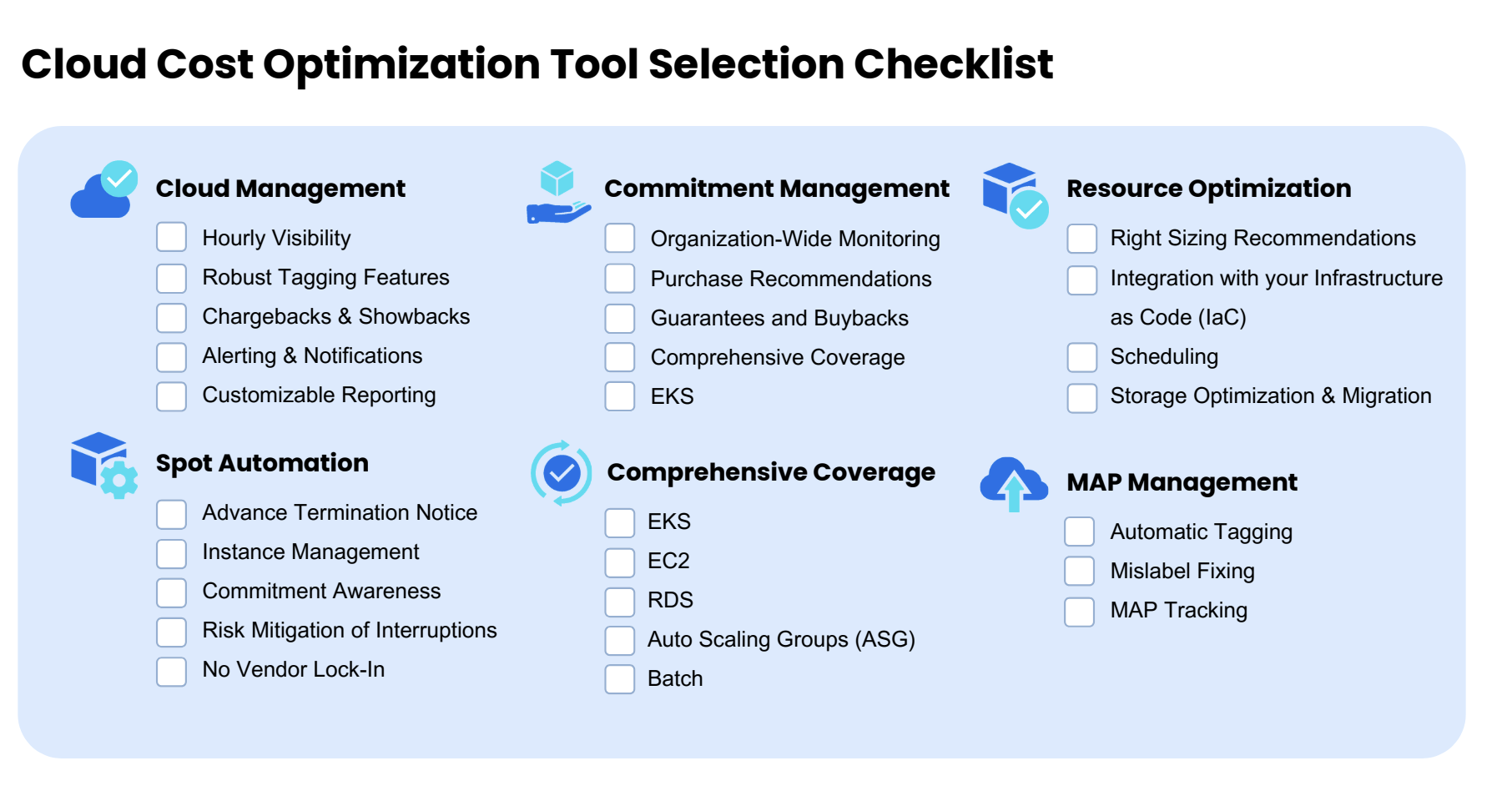
nOps: the All-In-One AWS Cost Optimization Solution
At nOps, our mission is to make it easy for engineers to cost-optimize, so that they can focus on building and innovating.
That’s why we put together a comprehensive suite of tools to cover all of your AWS cost optimization needs. And there’s no vendor lock-in — just plug nOps in to your preferred AWS-native service (EC2 ASG, EC2 for Batch, EKS with Karpenter or Cluster Autoscaler…) to start saving effortlessly.
nOps is entrusted with $1.5+ billion in cloud spend and was recently ranked #1 in G2’s cloud cost management category. Join our customers using nOps to cloud optimize with the latest automation by booking a demo today!
FAQ
Which AWS services can assist you with cost optimization?
AWS provides several services for cost optimization, including AWS Cost Explorer for cost visualization, AWS Trusted Advisor for best practice recommendations, AWS Compute Optimizer for resource rightsizing, and the AWS Cost Optimization Hub to consolidate and prioritize cost-saving opportunities across accounts and regions.
What is the Cost Management tool in AWS?
The AWS Cost Management tool is a suite of features within the AWS Billing and Cost Management console. It includes cost analysis, budgeting, cost allocation tags, and cost anomaly detection, helping you monitor, analyze, and control your AWS spending with detailed reports and alerts.
What is the AWS cost estimating tool?
The AWS Pricing Calculator is the main cost estimating tool. It lets you estimate the cost of new or existing workloads, including discounts, across AWS services. You can model scenarios, compare costs, and access historical usage to forecast expenses before deploying resources.
What is AWS cost optimizer?
AWS Compute Optimizer analyzes your actual resource usage and recommends optimal AWS resource types and sizes to reduce costs while maintaining performance. It supports EC2 instances, Auto Scaling groups, EBS volumes, and Lambda functions, helping you avoid over- or under-provisioning.
How to minimize cost on AWS?
To minimize AWS costs, you can use AWS cost management software to perform cost-saving actions like right-sizing resources, removing unused instances or storage, using Reserved or Spot Instances for predictable workloads, or moving infrequently accessed data to lower-cost storage tiers. It’s also important to regularly review cost reports and optimization recommendations from AWS tools.














